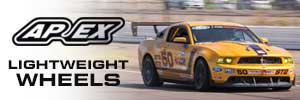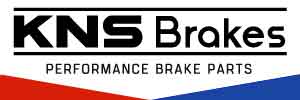Part 1:
Below are measurements that I took of the frequency response of the right rear channel at various frequencies. These are the first measurements taken with the speaker disconnected. Since I don't know what the topology of the amplifier is, these curves might change with the speaker, and thus the load, connected. It is clear to see that the stock stereo has a less than perfect flat response curve. This might change with a load connected but I ran out of time tonight to make these measurements. I will take those tomorrow and post if appreciably different than what I measured below.
The test setup was essentially a DVM attached to the speaker wires that feed the right rear speaker with the voltage output normalized to 0dB at 1000Hz by adjusting the volume control while playing a test track off of CD. I created a test CD using Sound Forge with sine waves at full scale digital (0dB FS) at the frequencies in the graph and played each track and then measured the output voltage at the speaker connector, again, with the speaker disconnected. Plugging these into a spreadsheet and converting the voltage levels to decibels through the equation level(dB)=20log V where V = the voltage measured on the DVM.
The graphs start with both bass and treble tone controls at the center setting (flat response). The bass boost is with the bass tone control set to max and the treble set to flat. Bass cut is with the bass tone control set to min and the treble at flat. Treble boost and cut are similar to bass boost and cut with the bass tone control set to flat.
These are not great response curves.
The other thing that hampers the sound quality from the stock system is that the speakers in the door are behind two sets of perforated speaker grilles. One set is, of course, the holes in the door panel and the other set are the holes in the cover over the speaker itself. Since these don't line up with each other at all, the sound eminated from the speakers in the door must travel through a set of offset holes which causes a terrible pattern of reflections within the door which also detracts from sound quality. Lots of high frequency distortion will result.





Below are measurements that I took of the frequency response of the right rear channel at various frequencies. These are the first measurements taken with the speaker disconnected. Since I don't know what the topology of the amplifier is, these curves might change with the speaker, and thus the load, connected. It is clear to see that the stock stereo has a less than perfect flat response curve. This might change with a load connected but I ran out of time tonight to make these measurements. I will take those tomorrow and post if appreciably different than what I measured below.
The test setup was essentially a DVM attached to the speaker wires that feed the right rear speaker with the voltage output normalized to 0dB at 1000Hz by adjusting the volume control while playing a test track off of CD. I created a test CD using Sound Forge with sine waves at full scale digital (0dB FS) at the frequencies in the graph and played each track and then measured the output voltage at the speaker connector, again, with the speaker disconnected. Plugging these into a spreadsheet and converting the voltage levels to decibels through the equation level(dB)=20log V where V = the voltage measured on the DVM.
The graphs start with both bass and treble tone controls at the center setting (flat response). The bass boost is with the bass tone control set to max and the treble set to flat. Bass cut is with the bass tone control set to min and the treble at flat. Treble boost and cut are similar to bass boost and cut with the bass tone control set to flat.
These are not great response curves.
The other thing that hampers the sound quality from the stock system is that the speakers in the door are behind two sets of perforated speaker grilles. One set is, of course, the holes in the door panel and the other set are the holes in the cover over the speaker itself. Since these don't line up with each other at all, the sound eminated from the speakers in the door must travel through a set of offset holes which causes a terrible pattern of reflections within the door which also detracts from sound quality. Lots of high frequency distortion will result.


















